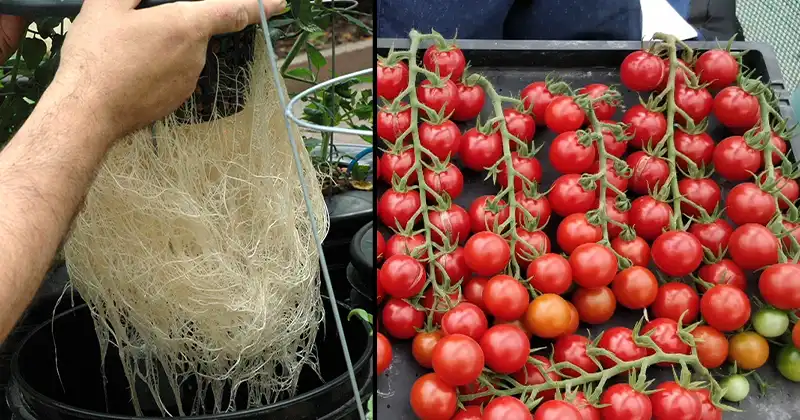Tomatoes are a popular and versatile vegetable in the culinary world, used in a variety of dishes from salads to sauces. While traditionally grown in soil, you can also successfully cultivate tomatoes without soil, using hydroponics or other soilless growing methods. In this article, we will explore how to grow tomatoes without soil, offering a comprehensive guide for both beginners and experienced gardeners.
Advantages of Soilless Tomato Cultivation
Before delving into the specifics of growing tomatoes without soil, it’s important to understand the advantages of this approach:
- Better Control:
Soilless growing allows for precise control of nutrient intake, pH levels, and environmental conditions. This leads to healthier plants and higher yields. - Reduced Pest and Disease Risk:
Soilless systems are less susceptible to soil-borne pests and diseases, providing a more hygienic growing environment. - Space Efficiency:
Hydroponic or soilless systems can be set up in limited spaces, making them suitable for urban gardeners or those with small gardens. -
Faster Growth:
Soilless systems often lead to faster growth and earlier harvests, as the plants receive nutrients directly through their roots.
Steps to Grow Tomatoes Without Soil
1. Choose the Tomato Varieties
Select tomato varieties that are well-suited to hydroponic or soilless growing. Indeterminate varieties, such as Cherry, Beefsteak, or Roma tomatoes, are popular choices. Ensure you choose disease-resistant varieties to minimize risks.
2. Hydroponic Systems
There are various hydroponic systems to choose from. The most common ones for growing tomatoes include:
- Deep Water Culture (DWC):
In this system, tomato plants are suspended in a nutrient-rich water solution, with their roots submerged. This allows for constant access to nutrients and oxygen. -
Nutrient Film Technique (NFT):
This system involves a continuous flow of nutrient solution over a sloped, narrow channel where the tomato plants’ roots dangle. The film of nutrients provides consistent nourishment. -
Drip System:
Drip systems provide a controlled release of nutrient solution to the plants’ root zones through a network of tubes and emitters. This method is efficient and allows for precise control of nutrient delivery.
3. Choose a Growing Medium
While hydroponic systems don’t use soil, they do require a growing medium to support the plants and provide stability. Common choices include:
- Coconut Coir:
Made from coconut husks, coconut coir is an excellent growing medium with good water retention and aeration properties. -
Perlite:
Perlite is a lightweight, sterile volcanic glass that improves aeration and drainage. -
Vermiculite:
Vermiculite is a mineral that retains moisture and nutrients while providing good aeration. -
Rock Wool:
Rock wool, or mineral wool, is made from molten rock spun into fibers. It provides excellent water and nutrient retention while offering stability.
4. Set Up the Hydroponic System
- System Assembly:
Follow the manufacturer’s instructions for assembling your chosen hydroponic system. Ensure all components, such as pumps and reservoirs, are properly installed. -
Nutrient Solution:
Prepare a balanced nutrient solution specifically designed for tomatoes. Follow the recommended mixing ratios for optimal plant growth. -
pH and EC Monitoring:
Regularly monitor and adjust the pH and electrical conductivity (EC) of your nutrient solution to ensure it remains within the ideal range for tomatoes (pH 5.5-6.5, EC 2.0-3.0 mS/cm).
5. Planting and Care
- Planting:
Place your tomato seedlings or seeds into the growing medium. Ensure the roots are properly supported and have access to the nutrient solution. -
Lighting:
Provide adequate lighting, especially if growing indoors. Tomatoes typically require 14-18 hours of light per day. Use full-spectrum grow lights for best results. -
Temperature and Humidity:
Maintain optimal temperatures (70-80°F during the day, 55-65°F at night) and humidity levels (50-70%) to promote healthy growth and fruit development. -
Pollination:
If growing indoors, manually pollinate your tomatoes by gently shaking the plants or using a small brush to transfer pollen between flowers.
By following these steps, you can successfully grow tomatoes without soil, taking advantage of the benefits of soilless cultivation. Whether you choose hydroponics or another soilless method, you’ll be on your way to enjoying fresh, homegrown tomatoes in no time.
